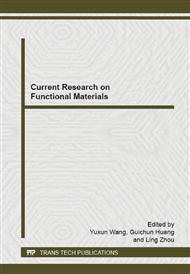p.93
p.97
p.103
p.109
p.115
p.122
p.129
p.136
p.143
Study on Dielectric Constant and Absorption Coefficient of Coupled Carbon Nanotube Array
Abstract:
Infinite single-walled nanotubes are seamless cylinders at the surface of which carbon atoms are organized in a honeycomb lattice. Based on the theory of meal and semiconductor, dielectric constant and absorption coefficient of CNT (12,0) in the direction of parallel to the axis and perpendicular to the axis were calculated by the method of density functional theory. The result showed that CNT performed excellent dielectric and absorption properties in the area of near infrared, visible light, near ultraviolet. Dielectric constant and absorption coefficient were improved as the space decrease between each tube. In terms of its incident direction, CNT was anisotropic medium. Generally, the value of dielectric constant and absorption coefficient parallel to the axis were larger than perpendicular to the axis. The facts impact dielectric constant was analyzed from the geometric structure and electrical structure. The property of absorption was analyzed from the quantum theory, which methods were different based on the alterable structure of CNT, such as intrinsic absorption, excition absorption and free carrier absorption. Complicated facts were worked on the macroscopical dielectric constant and absorption coefficient.
Info:
Periodical:
Pages:
115-121
Citation:
Online since:
October 2014
Authors:
Price:
Сopyright:
© 2014 Trans Tech Publications Ltd. All Rights Reserved
Share:
Citation:


